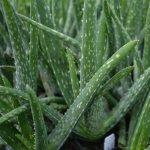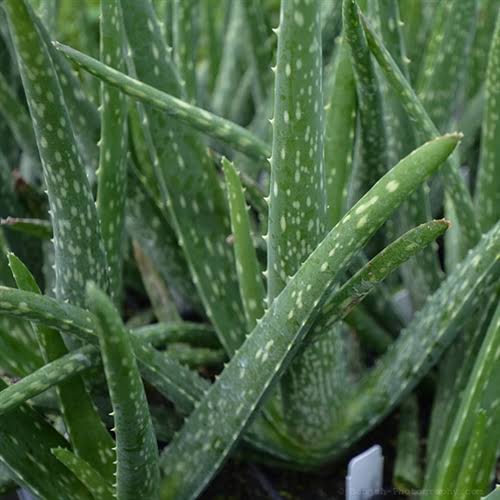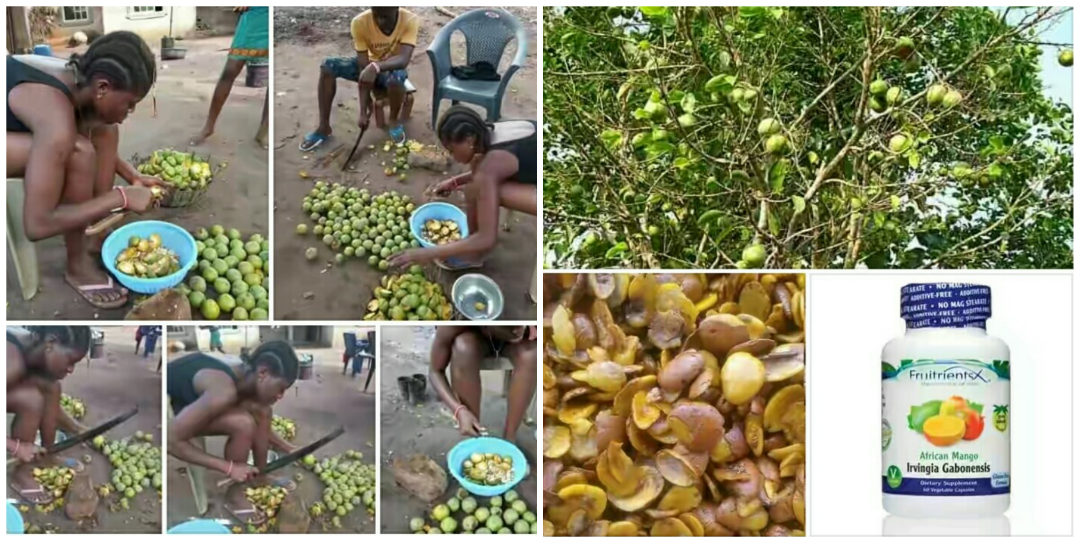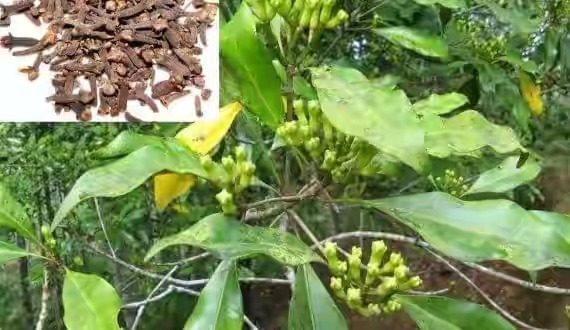Aloe vera Linn. (synonym: Aloe barbadensis Mill.) or Aloe vera, Barbados aloe, Coastal aloe, Curaçao aloe, Indian aloe, Medicinal aloe, Mediterranean aloe, True aloe, West Indian aloe (English) or Eti Erin? (Yoruba): An ancient medicinal plant with scientifically proven properties.
OCCURRENCE AND DESCRIPTION
Dating all the way back to ancient Egypt, Aloe Vera has long been regarded as a plant with deeply healing properties. Now, thousands of years later, this cactus-like member of the lily family is receiving the medicinal validation from the scientific community that natural healers and laypersons have known and relied upon for centuries. Aloe vera is a perennial succulent xerophyte up to 160 cm tall; it has elongated and pointed leaves that are joined at the stem in a rosette pattern and that grow to about 30-50 cm in length and 10 cm in breadth at the base in the adult plant. Leaves 16-20 in a dense rosette, erect to slightly spreading; stipules absent; petiole absent; blade linear-lanceolate. The leaf is protected by a thick, green epidermis layer (skin or rind), which surrounds the mesophyll.
Immediately beneath the rind are located the vascular bundles, which are composed of three types of tubular structures: the xylem (transports water and minerals from roots to leaves), the phloem (transports starch and other synthesized products to the roots), and the large pericyclic tubules (contains the yellow leaf exudate commonly referred to as “aloes,” “sap,” or “latex”. The pericyclic portion of the vascular bundle is adherent to the rind, whereas the remainder of the vascular bundle protrudes into the mesophyll layer. The mesophyll can be differentiated into chlorenchyma cells and thinner-walled parenchyma cells. The parenchyma (filet or pulp), which is the major part of the leaf by volume, contains a clear mucilaginous gel (known as Aloe vera gel).
Flowers are bisexual, regular, 3-merous; pedicel c. 5 mm long; perianth tubular, up to 3 cm long, inflated around the ovary, lobes 6, 3 outer lobes acute, 3 inner lobes obtuse, yellow, orange or red; stamens 6, exserted; ovary superior, 3-celled, 6-grooved, style filiform, stigma head-shaped, exserted. Fruit a capsule, dehiscing loculicidally, many-seeded. Seeds c. 7 mm long, dark brown, winged. Aloe vera is only known as a cultivated or naturalized plant.
It is generally presumed that the origin is Arabia, Somalia or Sudan and a recently discovered stand of Aloe vera in Oman could well prove to be the only wild population in the world. A Mediterranean origin is often quoted but probably wrong. At present, Aloe vera is widely distributed throughout the tropics and subtropics.
It is widely grown as a cash crop in dry regions in the Americas, Asia and Australia. Aloe vera was already used as a drug by the Greeks as early as 400 B.C. and later by Arabian physicians. It is probably present as a cultivated plant in all countries of tropical Africa, although its presence is largely undocumented.
Aloe comprises about 450 species in Africa and Arabia, of which c. 315 occur in mainland Africa, c. 100 are endemic to Madagascar or the Indian Ocean islands (including the former Lomatophyllum) and c. 50 occur in Arabia. The taxonomy is complicated by the occurrence of interspecific hybrids both in the wild and in cultivation. The long history of cultivation has led to various selections that are sometimes given formal botanical ranking.
The names Aloe vera and Aloe barbadensis have long been contentious among specialists. While taxonomists now agree that Aloe vera is the correct name, both pharmacologists and medical researchers still use both names, probably also due to patent-related problems. To confuse matters further many pharmacologists apply the name ‘aloe vera’ to products derived from other Aloe species. The group of Aloe species to which Aloe vera belongs is characterized by the production of suckers and a simple or sparsely branched inflorescence.
Aloe officinalis Forssk. has the same growth habit and is cultivated for medicinal use of the leaves in Somalia. It is native to Yemen and it is often incorrectly considered conspecific with Aloe vera. Aloe vera grows in a wide range of climatic conditions.
It prefers sandy or loamy, well-drained soils and can grow in nutritionally poor soil, but thrives on rich soils. It is tolerant of salinity. Established plants will survive drought quite well even though the root system is relatively shallow. Aloe vera is not very frost-hardy, but will survive a temperature of minus 3°C with only slight injury. It should be planted in full sun or light shade. During the winter months in the subtropics, the plant becomes dormant and utilizes very little moisture.
PROPAGATION
In Aloe vera cultivation, vegetative propagation is usually preferred above propagation by seed, because of poor seedling emergence and faster initial growth of suckers. Water deficiency may lead to decreased sucker formation. Suckers can be cut from the mother plant when they are 15-20 cm long. They may be grown in a nursery during the first year. Micropropagation through in-vitro culture of vegetative meristems, as well as in-vitro regeneration of leaf base explants is possible.
Aloe vera plants take about 3 years to attain harvestable size, and then leaves can be harvested for about seven years and survives for nearly 50 years under favorable conditions.
The exudate is collected by cutting off the leaves transversely close to the stem and positioning them in such a way that the juice drains into pots, tubs, vessels or even a simple canvas placed over a depression in the ground. The exudate may also be obtained by squeezing the leaves or by warm or cold water retting.
The leaves are usually cut in the morning and it takes 4-5 hours for the juice to drain from a pile of leaves. Only older leaves are cut; younger ones and growing tips are spared. For gel production, the leaves are cut at intervals of about 3 months.
The youngest leaves (< 25 cm) are not suitable because of their low gel content, but the leaves should not be too old because gel quantity and quality may decline. Individual Aloe vera leaves in Aruba reach their maximum fresh weight after about 40 weeks of growth.
Leaves with tip necrosis or that are otherwise damaged, should be discarded to avoid contamination of the gel with bacteria.
In a system where only selected leaves are cut, the possibilities for mechanical harvesting are limited. Harvesting: The exudate collected is concentrated by boiling and subsequent cooling or by vacuum evaporation. The resulting amorphous extract constitutes the drug ‘Curaçao aloe’.
The extract is opaque, waxy and often liver-coloured (‘hepatic’) and aloin crystals are visible under the microscope. Other compounds found in dried exudate may well be artefacts of boiling the exudate.
For gel production the cut leaves are transferred to water baths where debris is washed off. The leaves are then taken into the factory for filleting. To separate the gel-containing parts, each leaf is topped and tailed and the sides are cut off using a very sharp knife.
Then the outer tissues of the leaf are removed the same way. The remaining gel must be processed as quickly as possible to avoid degradation of the polysaccharides. In an alternative method used e.g. in Aruba, gel is obtained by cutting the leaves lengthwise and scraping the gel from the leaf blade. The gel is further cut into small pieces to produce a free flowing liquid, followed by refining and filtration.
Purification is done by centrifugal removal of cell wall material, and the liquid pure gel is stabilized chemically. Subsequently the gel may be concentrated and dehydrated. So-called ‘whole leaf aloe vera’ products are produced in the same way as the gel products but the outer tissues are extracted separately, the aloins are removed by mixing with fine charcoal, and the extract is subsequently sieved and added to the gel.
In Asia the whole dried fillet is marketed, and in several West African markets and in supermarkets in the United States whole fresh leaves are sold. The plant is commercially cultivated in Aruba, Bonaire, Haiti, India, South Africa, the United States of America, and Venezuela. While most people are aware of Aloe vera for cosmetic benefits, it’s highly nutritive qualities might come as a surprise to many.
Health benefits of Aloe vera
Aloe Vera contains 20 of the 22 essential amino acids (the building blocks of protein), 8 of the 13 known vitamins (including C and E), is high in antioxidants, enzymes and minerals.
It is especially high in calcium, magnesium, potassium and sodium. Aloe vera is a well-known medicinal plant widely used in modern herbal practice and often available in proprietary herbal preparations.
The exudate, called ‘aloe’, ‘aloes’ or ‘bitter aloes’, is contained in the pericycle cells of the vascular bundles in the leaf, and is used either fresh or dried. The dried exudate is used as a laxative, purgative and vermifuge.
The fresh leaf exudate is also taken as a laxative or purgative, and is externally applied as a refrigerant, to treat acne or cuts.
Mixed with other ingredients to mask its bitter taste, it is taken against asthma and to treat coughs. Similar mixtures are taken to cure dysentery, kidney problems or against dyspepsia. The exudate is used as a bittering agent for food and beer.
Aloe Vera has a mild laxative effect on the bowels. It is known to relieve heartburn, indigestion, Irritable Bowel Syndrome, peptic ulcers and stomach inflammations. It has a cooling and soothing effect on the digestive system. This makes it useful in preventing colon cancer. Aloe gel, the mucilage from the central part of the leaf, has a multitude of medicinal applications.
The gel or peeled leaves are generally applied to treat skin afflictions (burns, wounds, abrasions, skin diseases, irritations), as a poultice on contusions or as a general refrigerant. The gel is also applied externally to cure haemorrhoids.
It is furthermore used as a hair wash to promote hair growth and against dandruff, and as a general cosmetic to improve the complexion and to smooth the skin. The peeled leaves are eaten to relieve sore throat and coughs and as a mild laxative.
As a food supplement, Aloe vera gel is said to facilitate digestion, and to improve blood and lymphatic circulation, as well as kidney, liver and gall bladder functions. There are claims of beneficial activity of Aloe vera products in cases of AIDS, arthritis, or other chronic and debilitating conditions. However, these claims have not been substantiated by scientific studies.
There is also no evidence that topical Aloe vera gel is effective in preventing or minimizing radiation-induced skin reactions in cancer patients. In large amounts, the gel has anti-irritant properties. For tropical Africa there are reports from countries including Nigeria, DR Congo and Uganda of medicinal use of Aloe vera, in particular to treat skin problems.
Aloe vera gel has earned a reputation as a miracle drug. It is effective in burn treatment, because of its anti-inflammatory and wound-healing properties. Its healing properties may be due to rehydrating, insulating and protective activities resulting from the high water content. The major constituents are polysaccharides (mainly acemannan), lectins, sterols and enzymes, and the effect is assumed to be a synergy between the polysaccharide base and various components. In addition, acemannan has shown immune stimulating, anticancer and antiviral effects.
The use of the gel has been approved in the United States for treatment of leukaemia in cats, of fibrosarcoma in dogs, for wound healing in humans and to prevent dry socket (‘alveolar osteitis’) in humans. In several experiments with rats (including diabetic rats) both topical and oral treatments with Aloe vera gel had a positive influence on the synthesis of glycosamino glycans, thereby facilitating wound healing.
A placebo-controlled, double-blind study showed that a topically applied Aloe vera gel of 0.5% in a hydrophylic cream is beneficial for patients suffering from psoriasis. It did not show toxic or other side-effects.
A clinical test with patients with advanced solid tumours, for whom no standard effective therapy was available, suggested that Aloe vera gel in combination with the immunomodulating neurohormone melatonin may produce some therapeutic benefits, at least in terms of stabilization of disease and survival.
Contradicting results of clinical tests with Aloe vera products are common. A problem is that the identity of the tested plants is not always certain.
A second problem is that the products are not of standard composition, but depend on cultivar, growing conditions and handling after harvest.
Identification of the species however is doubtful as many Aloe species have identical uses. In Mauritius Aloe vera gel is used for treating sprains, muscle pain and callosities of the feet. Leaves and seeds are cooked and eaten as a vegetable.
The gel is used in the manufacture of commercial jellies, drinks and ice-cream. A novel application of gel powder is as a 1% addition to concrete, which gives the reinforcing steel better resistance against corrosion.
Aloe vera gel used in a coating on grapes lengthens the shelf life considerably and this patented method could also be applicable in other high-value fruits and vegetables. Aloe vera is often grown as an ornamental in gardens or pots.
PROPERTIES
Dried exudate contains 15-40% anthrone 10-C-glucosides (anthraquinone derivatives) such as aloin and hydroxyaloins. Aloin is a mixture of the stereoisomers aloin A (barbaloin) and aloin B (isobarbaloin). Furthermore, the exudate contains the pyrone derivative aloenin and free and glucosylated 2-acetonyl-7-hydroxy-5-methylchromones (e.g. aloesone, furoaloesone, aloeresin A, aloeresin B (aloesin) and aloeresin C). ‘Curaçao aloe’ should contain at least 28% hydroxy-anthraquinone derivatives; it is almost entirely soluble in 60% alcohol and for more than 70% in water. It should not contain more than 12% moisture and 3% ash. The compound responsible for the laxative properties is aloin, which itself is inactive as a laxative, but is activated to aloe-emodin anthrone, by Eubacterium sp. Although some observations indicate that in diarrhoea induced by aloin increased water content might be more important than stimulated peristalsis, the side effects of prolonged use point to a griping effect on the colon. Anthraquinone laxatives should not be used longer than 8–10 days, or by children younger than 12 years.
Contra-indications
Contra-indications include pregnancy, breastfeeding, intestinal inflammations and haemorrhoids. It has been claimed that aloin is responsible for antihistamine and anti-inflammatory activity. Aloin should be administered preferably in combination with an antispasmodic to moderate its griping action.
Possible side effects of aloin include congestion and irritation of the pelvic organs. Anthraquinone laxatives may play a role in development of colorectal cancer as they have genotoxic potential, and tumorigenic potential in rodents.
Both aloin and aloeresin B have skin-whitening activity. Large variations in aloin content have been found in Aloe vera, with the highest concentration in exudates from younger mature leaves. In 2002 the United States Food and Drug Administration withdrew the ‘generally recognized as safe and effective (GRASE)’ status for over-the-counter drugs based on aloe exudates.
Contradicting results of clinical tests with Aloe vera products are common. A problem is that the identity of the tested plants is not always certain.
A second problem is that the products are not of standard composition, but depend on cultivar, growing conditions and handling after harvest.

Credit: The Growers Exchange
Therefore, commercial products may vary enormously in composition. Also, contamination of the gel with exudate can turn a harmless product into a purgative. It is therefore imperative that products of well-defined composition are used for clinical trials, that the identity of the plant is confirmed by a taxonomist and that a specimen is deposited in a herbarium for future reference.
FUTURE PROSPECTS
Aloe vera is of particular interest for the use of its gel in burn and wound care. It will remain beneficial as a household remedy: fresh gel can easily be prepared and applied to wounds. In its use as a laxative, however, the drug tends to be replaced by other laxatives such as those from Plantago spp. Even so, there is still considerable demand, also for veterinary use, worldwide.
For gel production Aloe vera has potential as a commercial crop in arid regions as the demand is enormous and increasing; in Kenya plantations of Aloe vera have started on a small scale. Growing Aloe vera for gel requires however considerable investment in processing equipment.
In the Western World the medicinal use of Aloe vera extracts will be gradually replaced by that of purified drugs. The number of scientific and pseudo-scientific publications on medicinal and pharmacological aspects is overwhelming and new insights are likely to contribute to the demystification of now contentious claims about the beneficial effects of Aloe vera.
The identification of active ingredients and mechanisms of action are critical for production of effective and safe drugs based on Aloe vera and other Aloe species.
These are the thoughts of:
Sa’eed Halilu Bawa
Senior Lecturer (Associate Professor) at University of the West Indies, St. Augustine Campus, Trinidad.
Studied Food and Nutrition Sciences, Dietetics at Kaduna Polytechnic, Nigeria; Warsaw University of Life Sciences, Poland.
























